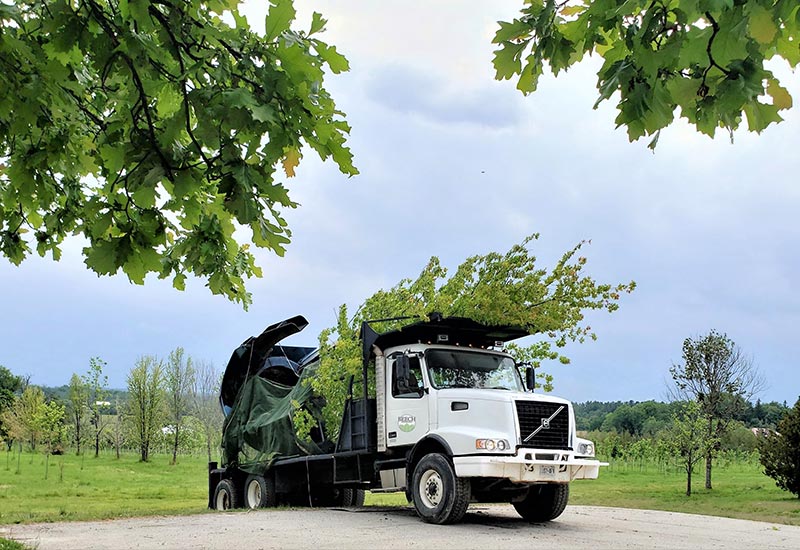When designing a landscape, many homeowners and property developers dream of lush, mature trees that provide shade, privacy, and beauty. However, waiting years for trees to grow can be frustrating. That’s where tree spading comes in—a game-changing technique that allows for the instant transformation of landscapes by relocating large, mature trees with precision and care.
What Is Tree Spading?
Tree spading is a specialized method of transplanting large trees using a tree spade—a machine equipped with hydraulic blades that dig around the tree’s root ball, lift it from the ground, and relocate it to a new spot. This technique allows for the safe and efficient movement of trees that would otherwise take decades to reach maturity.
Why Choose Tree Spading?
- Instant Landscape Maturity – No waiting years for trees to grow!
- Immediate Shade & Privacy – Perfect for properties needing instant coverage.
- Eco-Friendly Approach – Preserves established trees rather than cutting them down.
- Enhanced Property Value – Mature trees boost curb appeal and real estate value.
The Benefits of Transplanting Large Trees
1. Instant Curb Appeal & Shade
A well-placed mature tree instantly enhances the aesthetics of a property, making it look established and inviting. Additionally, large trees provide immediate shade, which can help lower energy costs by cooling homes and outdoor spaces.
2. Privacy & Noise Reduction
Looking for a natural screen to block unwanted views or dampen street noise? Large trees create a living privacy barrier, making your yard feel more secluded and peaceful.
3. Saves Time & Money
Planting a young sapling and waiting for it to mature takes years of patience, maintenance, and risk of failure. Spading allows you to skip this process and enjoy the benefits of a mature tree right away.
4. Tree Preservation & Relocation
Instead of cutting down trees due to construction or landscaping changes, tree spading allows for safe relocation, giving trees a second life in a new environment.
How Tree Spading Works
- Step 1: Site Evaluation – Experts assess the soil, tree health, and destination location.
- Step 2: Preparing the Tree – The tree is watered and pruned (if necessary) before moving.
- Step 3: Tree Spading & Transplanting – A hydraulic tree spade digs up the tree, lifts it, and transports it to the new location.
- Step 4: Post-Transplant Care – Proper watering, mulching, and monitoring help the tree establish itself in its new home.
Pro Tip: Spring and fall are the best seasons for tree spading, as cooler temperatures reduce transplant shock.
Choosing the Right Trees for Spading
Not all trees are suitable for transplanting. The best candidates for tree spading include:
- Deciduous Trees – Maples, oaks, elms, and birches adapt well to transplanting.
- Evergreens – Spruce, pine, and cedar provide year-round greenery and privacy.
- Ornamental Trees – Beech, flowering crabapples, dogwoods, and redbuds add instant beauty.
For best results, consult a tree spading specialist to determine if your tree is a good candidate.
Final Thoughts
Tree spading is the perfect solution for homeowners, landscapers, and developers who want instant results without the wait. Whether you’re enhancing your property, preserving a beloved tree, or creating a mature landscape overnight, tree spading provides instant gratification with long-term benefits. Interested in tree spading? Contact Beech Nurseries today for expert advice and professional tree relocation services!


